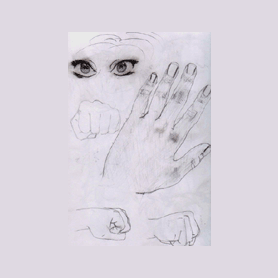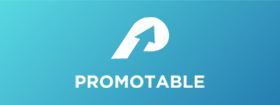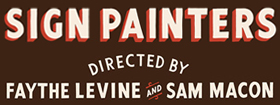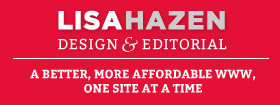Ruth Schmidt
Design Consultant
Primary design concentration:
Communication/Information/Interface Design
Most preferred tool for designing:
Hand-sketching and Photoshop
1. How and why did you choose to become a designer?
Probably in college—I was majoring in Philosophy when I stumbled into the field of Semiotics, or the study of sign systems, which essentially investigates the concept of communication and its relation to culture. At the same time I realized I was less interested in art than in applying visual techniques to problem-solving, and there you go.
2. Challenges you encounter as a designer and how do you deal with them?
1) Clients who think you will take critiques personally—this requires training them out of it; 2) Logistical things like slipping deadlines, which I haven’t fully solved yet; 3) The mixed blessing of being too busy with work, which doesn’t allow for down-time that helps one to reframe how to think about problems—imposed vacations away from work, even if only for an day, usually do the trick.
3. Your definition of an “elegant solution,” that is, good design?
A certain sense of economy (more is not always more); Clarity; A point of view; Appropriateness for its audience.
4. From skills to values, what makes a designer successful?
Curiosity: Being a good listener and question-asker; An obsession over details; Empathy: The ability to take one’s head off and look through someone else’s eyes; A sense of humor; A strong sense of visual language; Delivering on deadlines every time (being reliable sounds boring, but can make or break you).
5. How do you stay motivated and grow personally and professionally as a designer?
After many years in the interface design field, primarily in e-learning, I wasn’t feeling challenged in the right way. It was more about how much client-pleasing work I could turn around than the actual quality of the solution. So I went back to school, which as a mid-career professional, has its own challenges, but I’m surrounded by talented people + interesting ideas and learning new approaches to problem-solving.
6. For those aspiring to become a designer, whatever the discipline, what is your advice?
Use everything you see as raw material—Develop the habit of examining things critically, and develop an understanding why they work as designed objects, services, or practices.
7. What is your quest in design?
Developing a means of “design thinking” may be the single most useful tool to strive for—it’s medium—and industry-agnostic, less about the purely visual than about the overall experience, and focuses on the content and users rather than technology. If I can get the word out about that and find ways to put it to use, I’ll be satisfied.
Previous: César Campa | Next: Mario Cipresso

Support Design Feast via Patreon
This self-made project and its related efforts constitute a gracious obsession. The intention is to give a wholehearted and timely serving—as much as possible—of creative culture. If you gain a level of motivation, knowledge, even delight, from the hundreds of interviews plus write-ups here at Design Feast, and are able to contribute, please become a Patron with a recurring monthly donation. Thank you for your consideration!
Stay healthy and keep creating throughout the year!
Wishing you much success,
Nate Burgos, Content Creator & Publisher



Comments
There are no comments yet.
Leave Your Comment